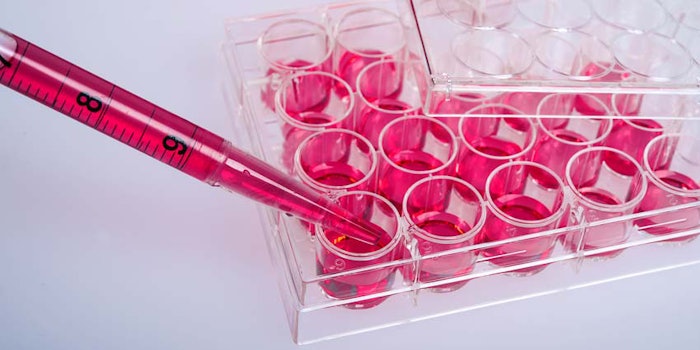
Research published in Materials Science and Engineering: C describes the construction of tissue-engineered skin based on hydrogel networks and complete with rete ridges.
As the authors explain, tissue-engineered skin is a promising skin substitute, useful for in vitro research and skin repair, but usually it lacks rete ridges (RRs). These epithelial extensions project into underlying connective tissue, enhancing adhesion and providing a growth environment for epidermal stem cells.
See related: Kao and Tsukuba Univ. Scientists Devise Technique to Visualize the Depths of Skin Wrinkling
Here, the engineers prepared photocurable gelatin methacrylated (GelMA) and poly(ethylene glycol) diacrylate (PEGDA) co-network hydrogels. Using a UV-curing 3D printer, 3D micropatterns were replicated on these hydrogel scaffolds, with which human keratinocytes and skin fibroblasts were then co-cultured.
The results showed 10%GelMA and 2%PEGDA hydrogels provided sufficient mechanical properties and biocompatibility to prepare a human skin model including RRs. The authors concluded this work demonstrates a simple and powerful way to mimic the structures of human skin and can contribute to skin tissue engineering and wound healing research.
See related: Sensing Epidermal Aging via Histone Variant H2A.J Biomarker





!['We believe [Byome Derma] will redefine how products are tested, recommended and marketed, moving the industry away from intuition or influence, toward evidence-based personalization.' Pictured: Byome Labs Team](https://img.cosmeticsandtoiletries.com/mindful/allured/workspaces/default/uploads/2025/08/byome-labs-group-photo.AKivj2669s.jpg?auto=format%2Ccompress&crop=focalpoint&fit=crop&fp-x=0.49&fp-y=0.5&fp-z=1&h=191&q=70&w=340)




